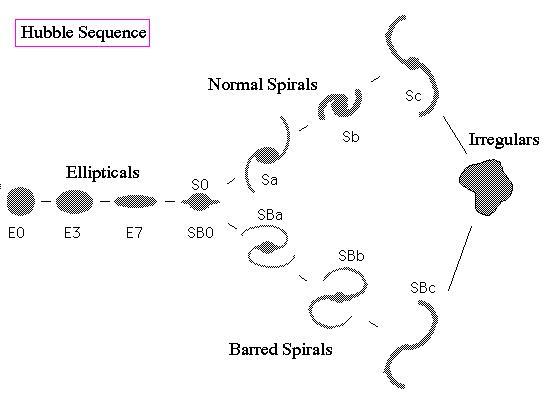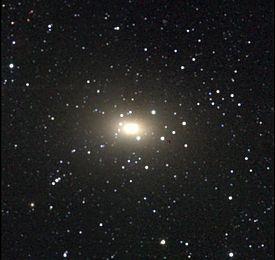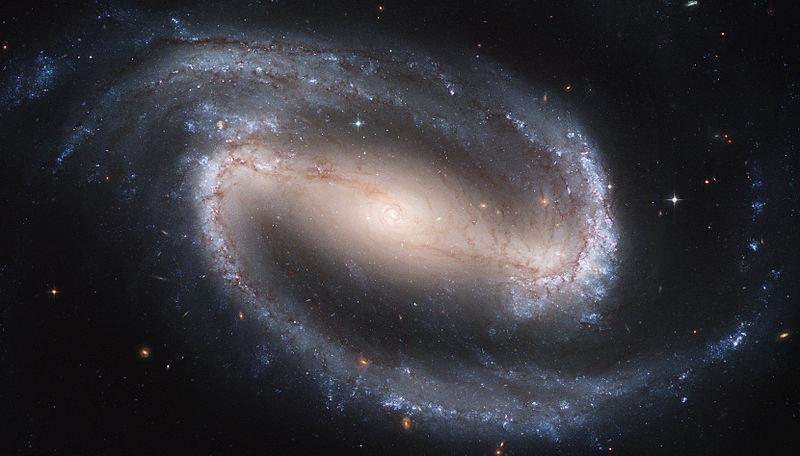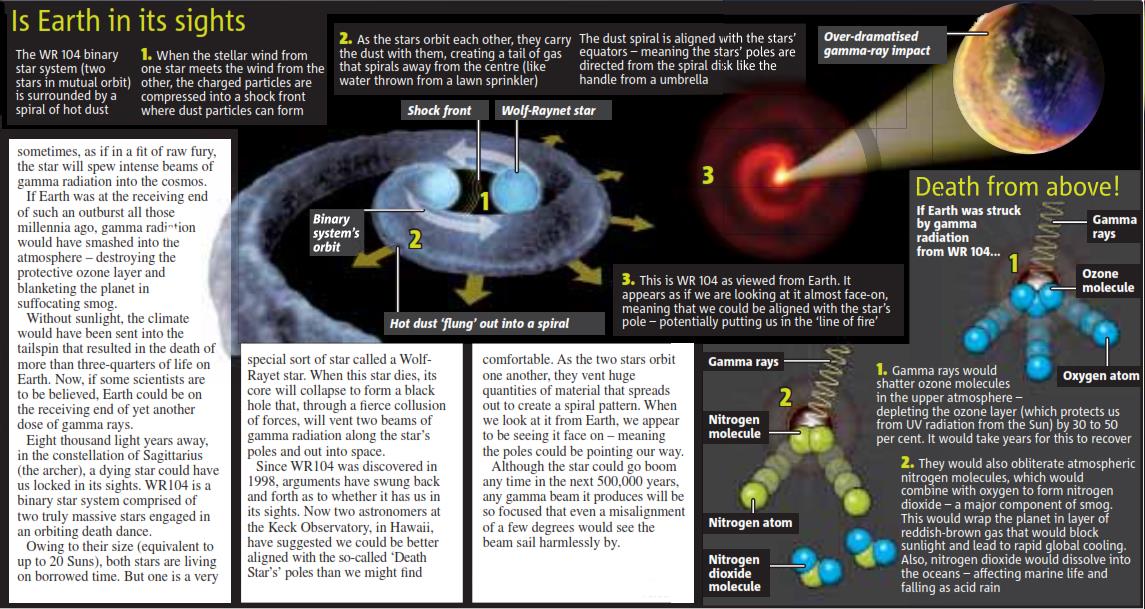Types of Galaxies
Maffei 1 lies in the Zone of Avoidance and is heavily obscured by the Milky Way's stars and dust. If it were not obscured, it would be one of the largest (about 3/4 the size of the full Moon) brightest and best-known galaxies in the sky. It can be observed visually, using a 30-35 cm or bigger telescope under a very dark sky.
Discovered on a hyper-sensitized I-N photographic plate exposed on 29 September 1967 with the Schmidt telescope at Asiago Observatory. It was named after Paolo Maffei, who discovered it and the neighboring Maffei 2 in 1967 via their infrared emissions.
'Spiral Galaxies' consist of a rotating disk of stars and interstellar medium, along with a central bulge of generally older stars. Extending outward from the bulge are relatively bright arms. In the Hubble classification scheme, spiral galaxies are listed as type S, followed by a letter (a, b, or c) that indicates the degree of tightness of the spiral arms and the size of the central bulge. An Sa galaxy has tightly wound, poorly defined arms and possesses a relatively large core region. At the other extreme, an Sc galaxy has open, well-defined arms and a small core region. A galaxy with poorly defined arms is sometimes referred to as a flocculent spiral galaxy; in contrast to the grand design spiral galaxy that has prominent and well-defined spiral arms.
In spiral galaxies, the spiral arms do have the shape of approximate logarithmic spirals, a pattern that can be theoretically shown to result from a disturbance in a uniformly rotating mass of stars. Like the stars, the spiral arms rotate around the center, but they do so with constant angular velocity. The spiral arms are thought to be areas of high-density matter, or "density waves". As stars move through an arm, the space velocity of each stellar system is modified by the gravitational force of the higher density. (The velocity returns to normal after the stars depart on the other side of the arm.) This effect is akin to a "wave" of slowdowns moving along a highway full of moving cars. The arms are visible because the high density facilitates star formation, and therefore they harbor many bright and young stars.
NGC 1300, an example of a barred spiral galaxy.
A majority of spiral galaxies have a linear, bar-shaped band of stars that extends outward to either side of the core, then merges into the spiral arm structure. In the Hubble classification scheme, these are designated by an SB, followed by a lower-case letter (a, b or c) that indicates the form of the spiral arms (in the same manner as the categorization of normal spiral galaxies). Bars are thought to be temporary structures that can occur as a result of a density wave radiating outward from the core, or else due to a tidal interaction with another galaxy. Many barred spiral galaxies are active, possibly as a result of gas being channeled into the core along the arms.
Our own galaxy, the Milky Way, is a large disk-shaped barred-spiral galaxy about 30 kiloparsecs in diameter and a kiloparsec thick. It contains about two hundred billion (2×1011) stars and has a total mass of about six hundred billion (6×1011) times the mass of the Sun.
Maffei 1 is a giant elliptical galaxy in the constellation Cassiopeia. Once believed to be a member of the Local Group of galaxies, it is now known to belong to its own group, the IC 342/Maffei Group. It was named after Paolo Maffei, who discovered it and the neighboring Maffei 2 in 1967 via their infrared emissions.
Maffei 1 is a slightly flattened core type elliptical galaxy. It has a boxy shape and is made mainly of old metal-rich stars. It has a tiny blue nucleus in which stars continue to form. Like all large ellipticals it contains a significant population of globular clusters. Maffei 1 is situated at an estimated distance of 3-4 Mpc from the Milky Way. It may be the closest giant elliptical galaxy.
A free template by Lucknowwebs.com for WYSIWYG WebBuilder 8
Galaxies
Copyright © by Nigel G Wilcox · All Rights reserved · E-Mail: ngwilcox100@gmail.com
Main Index
Space Cosmology
Designed by Nigel G Wilcox
Science Research
*
About
Science Research
Science Theories
Desk
Site Map
BookShelf
Powered By AM3L1A
Galaxies
Pages:
The Hubble classification system rates 'Elliptical Galaxies' on the basis of their ellipticity, ranging from E0, being nearly spherical, up to E7, which is highly elongated. These galaxies have an ellipsoidal profile, giving them an elliptical appearance regardless of the viewing angle. Their appearance shows little structure and they typically have relatively little interstellar matter. Consequently these galaxies also have a low portion of open clusters and a reduced rate of new star formation. Instead they are dominated by generally older, more evolved stars that are orbiting the common center of gravity in random directions. The stars contain low abundances of heavy elements because star formation ceases after the initial burst. In this sense they have some similarity to the much smaller globular clusters.
The largest galaxies are giant ellipticals. Many elliptical galaxies are believed to form due to the interaction of galaxies, resulting in a collision and merger. They can grow to enormous sizes (compared to spiral galaxies, for example), and giant elliptical galaxies are often found near the core of large galaxy clusters. Starburst galaxies are the result of such a galactic collision that can result in the formation of an elliptical galaxy.
Pages within this section:
Galaxies
9
-
10
Sub-Menu
10a
11













